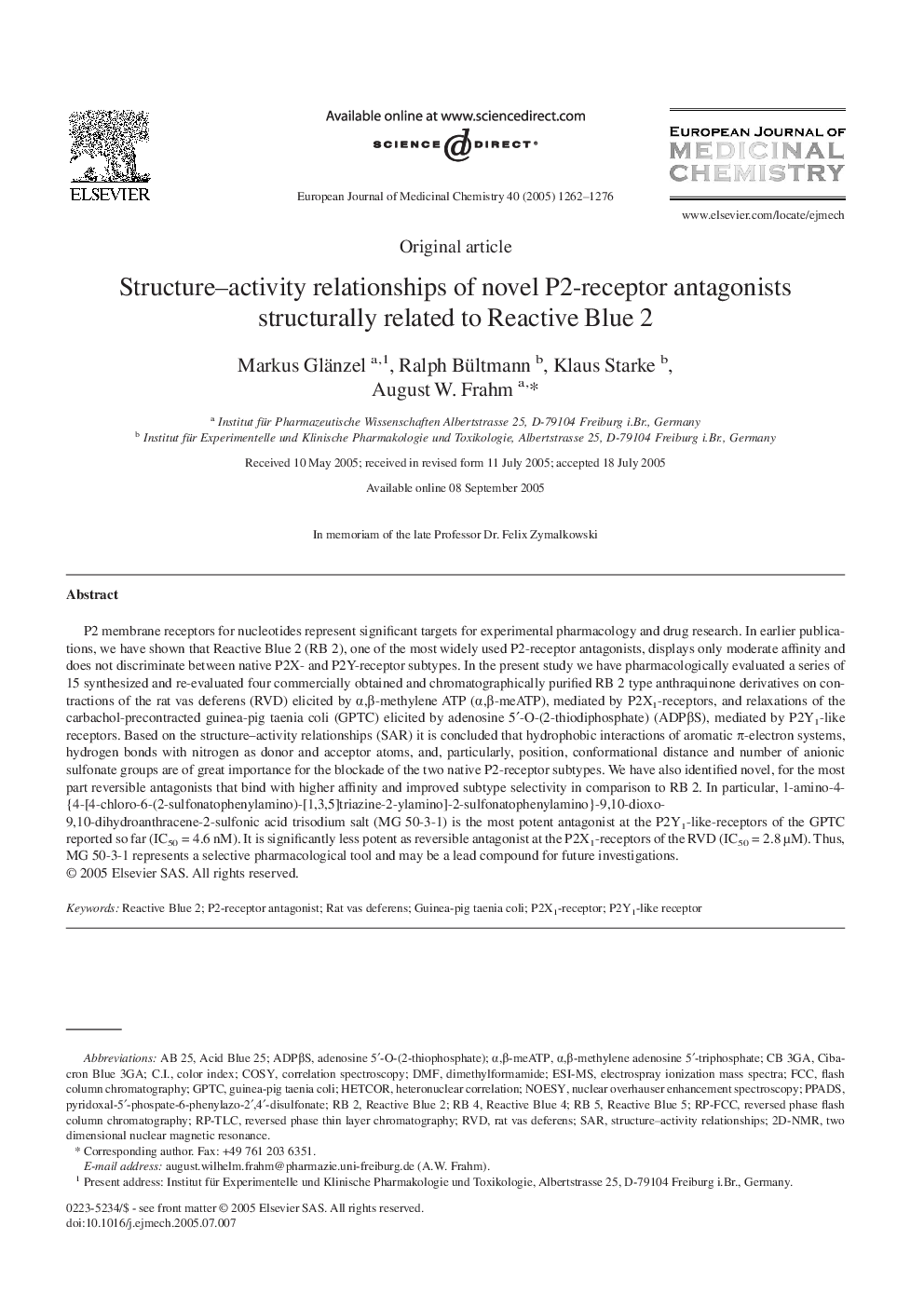| Article ID | Journal | Published Year | Pages | File Type |
|---|---|---|---|---|
| 9769156 | European Journal of Medicinal Chemistry | 2005 | 15 Pages |
Abstract
P2 membrane receptors for nucleotides represent significant targets for experimental pharmacology and drug research. In earlier publications, we have shown that Reactive Blue 2 (RB 2), one of the most widely used P2-receptor antagonists, displays only moderate affinity and does not discriminate between native P2X- and P2Y-receptor subtypes. In the present study we have pharmacologically evaluated a series of 15 synthesized and re-evaluated four commercially obtained and chromatographically purified RB 2 type anthraquinone derivatives on contractions of the rat vas deferens (RVD) elicited by α,β-methylene ATP (α,β-meATP), mediated by P2X1-receptors, and relaxations of the carbachol-precontracted guinea-pig taenia coli (GPTC) elicited by adenosine 5â²-O-(2-thiodiphosphate) (ADPβS), mediated by P2Y1-like receptors. Based on the structure-activity relationships (SAR) it is concluded that hydrophobic interactions of aromatic Ï-electron systems, hydrogen bonds with nitrogen as donor and acceptor atoms, and, particularly, position, conformational distance and number of anionic sulfonate groups are of great importance for the blockade of the two native P2-receptor subtypes. We have also identified novel, for the most part reversible antagonists that bind with higher affinity and improved subtype selectivity in comparison to RB 2. In particular, 1-amino-4-{4-[4-chloro-6-(2-sulfonatophenylamino)-[1,3,5]triazine-2-ylamino]-2-sulfonatophenylamino}-9,10-dioxo-9,10-dihydroanthracene-2-sulfonic acid trisodium salt (MG 50-3-1) is the most potent antagonist at the P2Y1-like-receptors of the GPTC reported so far (IC50 = 4.6 nM). It is significantly less potent as reversible antagonist at the P2X1-receptors of the RVD (IC50 = 2.8 μM). Thus, MG 50-3-1 represents a selective pharmacological tool and may be a lead compound for future investigations.
Keywords
C.I.Guinea-pig taenia colielectrospray ionization mass spectraReactive blue 5Cibacron Blue 3GARP-TLC2D-NMRHETCORα,β-methylene adenosine 5′-triphosphateADPβSNOESYDMFSARRVDFCCPPADSESI-MSα,β-MeATPreactive blue 2Acid Blue 25dimethylformamideStructure–activity relationshipsColor indexNuclear Overhauser enhancement spectroscopycorrelation spectroscopyRat vas deferensHeteronuclear correlationReactive blue 4COSYFlash column chromatography
Related Topics
Physical Sciences and Engineering
Chemistry
Organic Chemistry
Authors
Markus Glänzel, Ralph Bültmann, Klaus Starke, August W. Frahm,
